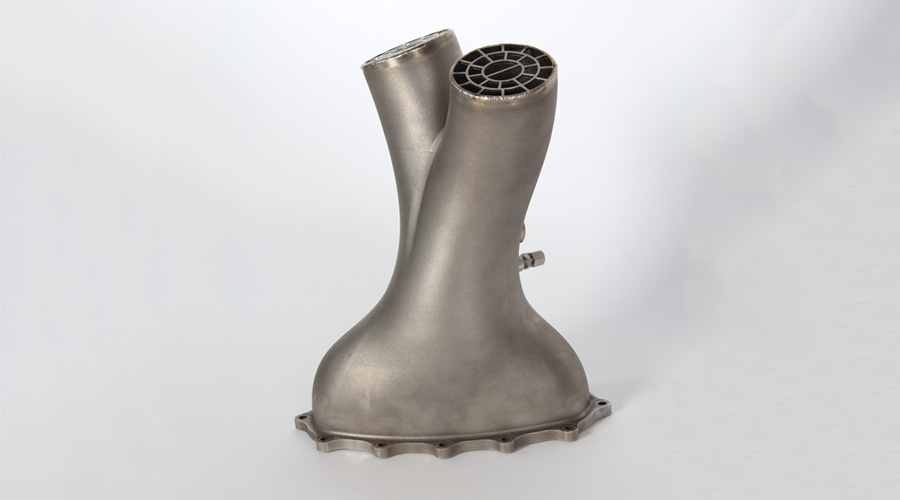Direct Metal Lazer Sintering or DMLS for short, is an emerging and ever improving method of 3D printing. Unlike common plastic rapid prototyping technologies, DMLS uses various powdered metal alloys such as Inconel, Aluminium, Titanium and Stainless Steel. It can be used to produce intricate and complex shapes sharing the equivalent mechanical properties of traditional cast metal components.
To form these shapes, a high-wattage laser is used to micro weld metal particles together to form a complete shape from CAD data. There are very few manufacturing limitations to consider when using DLMS so long as the designer can draw up a feasible CAD design for the application in hand.
DMLS uses a dropping manufacture bed to build up components layer by layer. Due to this, full assemblies including internal features that could not perhaps be machine or cast are now possible. In addition to this, assemblies can be redesigned and simplified into fewer parts combining components and potentially reducing costs.
As with traditional components, DMLS parts can be heat treated, surface finished or destressed to maximise the mechanical properties of the components.
In addition to these impressive manufacturing qualities, the relative cost of producing low quantities of complex components is low. This is due to a lack of expensive traditional metal forming tooling being required and additional hours for hand fabrication.
Many industries benefit from using such a method including:
- Manufacturing, to satisfy niche and low volume markets.
- Aerospace, for various fixtures and mounts.
- Medical, for it’s high accuracy capabilities.
- High-end motorsport for both components and rapid prototyping.
Here at Primary Designs, we use this method of manufacture to produce both small technically demanding components and larger organic automotive exhaust sections to a high precision. Additionally, with the short turn around DMLS can provide, it helps us reduce the overall manufacturing time and get finished exhausts to customers on a quicker overall turn around.
We have found that even in the past few years, the feasibility of using such technology has exponentially increased. As with all developing technology, the reducing cost has become increasingly attractive and when paired to the manufacturing accuracy it has become an incredibly valuable resource.
